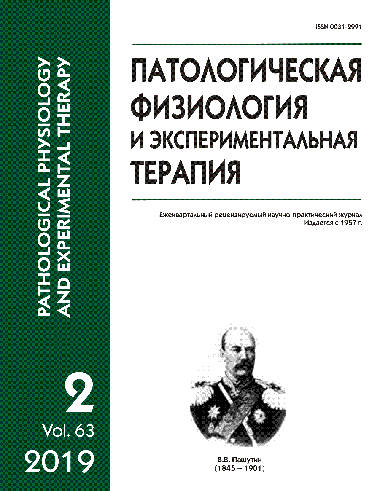Toxicity of spherical and needle-shaped calcium phosphate bions to injured intima of the rat abdominal aorta
Keywords:
atherosclerosis, bions, nanoparticles, calcium phosphate, toxicity, endothelium, intimal hyperplasia, systemic inflammation
Abstract
Purpose. To compare toxicity of spherical calcium phosphate bions (SCPB) and needle-shaped calcium phosphate bions (NCPB) to injured intima of rat aortas. Methods. Toxicity of SCPB and NCPB to injured abdominal aortas of Wistar rats (n = 10 per group) was evaluated using intravenous administration of the bions after balloon angioplasty. Rats were sacrificed five weeks postoperation, and an injured aortic segment was excised. Tissue preparations were stained with hematoxylin and eosin, alizarin red S, Weigert-van Gieson, and Movat’s pentachrome stains. Selected tissue samples were then examined using combined immunofluorescence staining (CD31/CD34, CD31/ α-smooth muscle actin (α-SMA), α-SMA/vimentin, and α-SMA/collagen IV). Possible influence of systemic inflammation on CPBinduced endothelial toxicity was assessed by measuring monocyte chemoattractant protein-1 and ceruloplasmin in rat serum using the enzyme-linked immunosorbent assay. Results. Intravenous administration of SCPB or NCPB provoked intimal hyperplasia in 90% (9 of 10) and 80% (8 of 10) of rats vs. 10% (1 of 10) in the control group. The neointima was characterized by a phenotypic switch of mesenchymal cells, i.e. transition of a contractile (α-SMA-positive, vimentin-negative vascular smooth muscle cells) and quiescent (α-SMA-negative vimentin-positive fibroblasts) to an active synthetic phenotype (double-positive cells), which resulted in deposition of the extracellular matrix. Neither SCPB nor NCPB changed serum levels of pro-inflammatory molecules, МСР-1/CCL2, and ceruloplasmin. Conclusions. Intravenous administration of CPB upon balloon-induced vascular injury caused intimal hyperplasia regardless of the CPB shape. Hyperplasia foci were characterized by a switch of mesenchymal cells from a contractile/quiescent to an active synthetic phenotype. Endothelial toxicity of CPBs was defined by their direct cytotoxic action rather than induction of systemic inflammation.Downloads
Download data is not yet available.
Published
27-05-2019
How to Cite
Kutikhin A. G., Shishkova D. K., Velikanova E. A., Mironov A. V., Krivkina E. O., Barbarash O. L. Toxicity of spherical and needle-shaped calcium phosphate bions to injured intima of the rat abdominal aorta // Patologicheskaya Fiziologiya i Eksperimental’naya Terapiya (Pathological physiology and experimental therapy). 2019. VOL. 63. № 2. PP. 80–88.
Issue
Section
Original research






